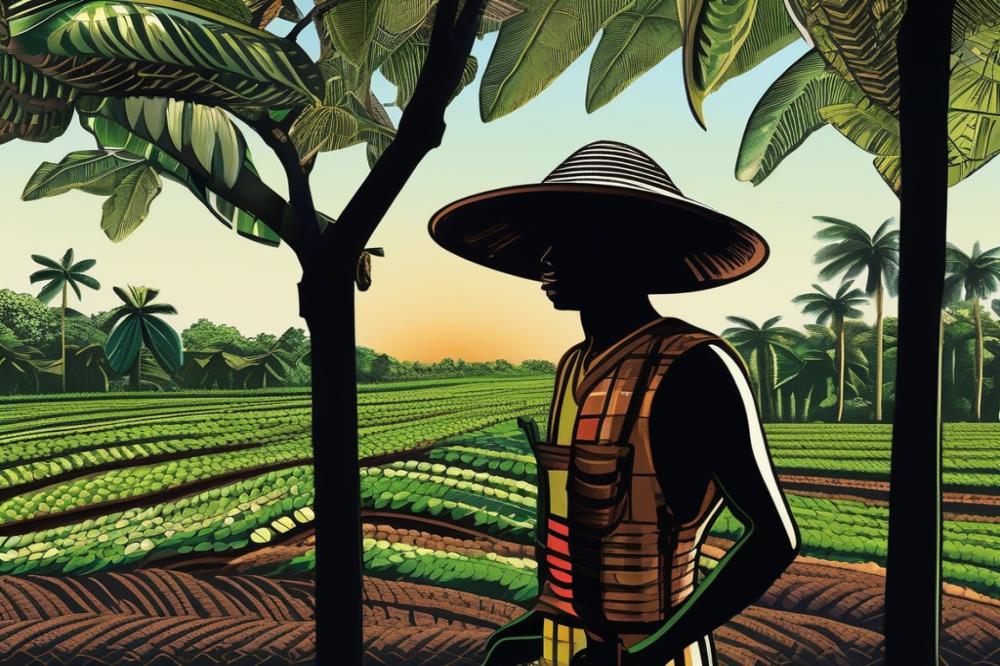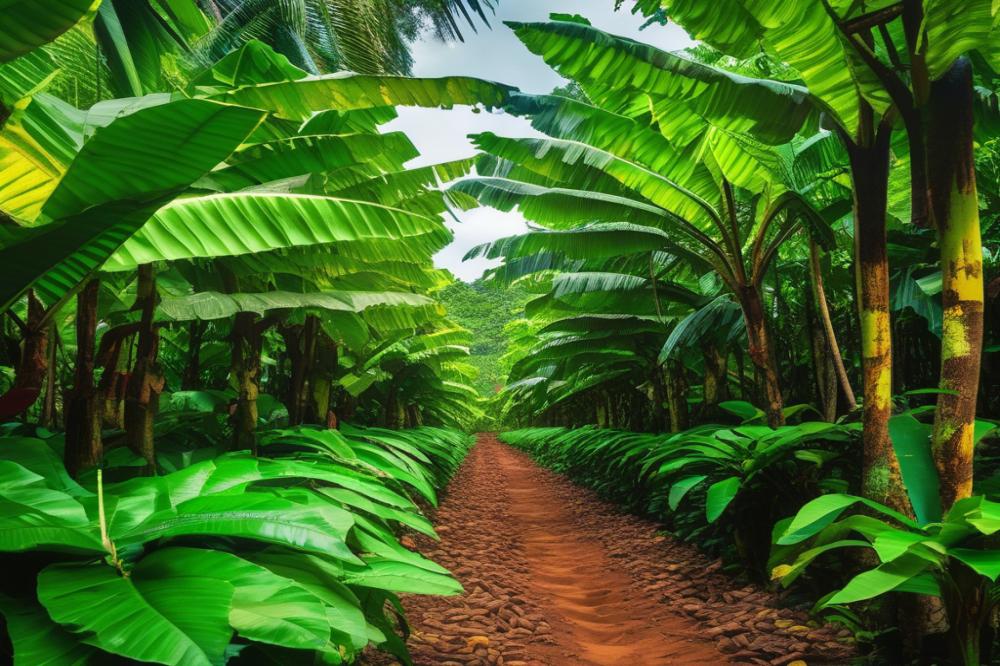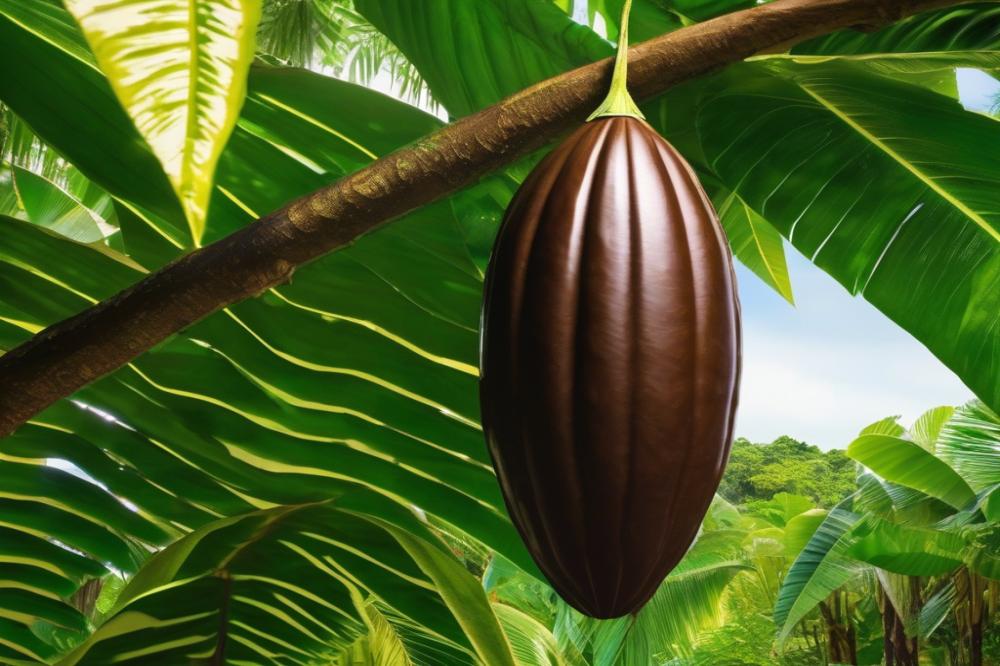The Role of Cocoa in chocolatebix.com/cocoa-in-cosmetics-skin-care-benefits-and-diy-recipes”>sustainable agriculture
Cocoa serves as a vital agricultural commodity, with roots deeply embedded in many cultures around the globe. This crop not only produces the beloved chocolate that many adore, but it also plays a significant role in the economies of several countries, particularly in regions where cocoa farming thrives. For millions of farmers, cocoa is often a primary source of income, making its sustainability crucial for their livelihood.
The global economy relies heavily on cocoa. Approximately 70% of the world’s supply comes from West Africa. Nations like Ivory Coast and Ghana depend on this crop for economic stability. The revenues generated from cocoa help maintain local communities and even support national economies. Its influence reaches far beyond cocoa beans. Thus, understanding its challenges, particularly regarding ethical sourcing, becomes essential.
However, cocoa production faces many issues. Unsustainable farming practices can lead to severe environmental impact, including deforestation and loss of biodiversity. Shifting towards agroforestry methods helps create balance. These practices allow farmers to cultivate cocoa alongside other plants, promoting soil health and encouraging biodiversity. This approach also contributes to climate resilience, ensuring that farms can withstand changing weather patterns.
Cocoa sustainability emphasizes the importance of fair trade principles. By purchasing cocoa from sources that practice ethical methods, consumers can support community development and allow for equitable pay for farmers. The cocoa supply chain should be transparent, reinforcing this notion of treating farmers fairly. As awareness grows, more people are choosing products that reflect their values.
In summary, the future of cocoa within the context of sustainable agriculture remains a pressing topic. People must actively seek solutions to enhance the cocoa industry while supporting farmers. The benefits of investing in Cocoa sustainability are clear. It serves the dual purpose of ensuring economic stability for communities while protecting the planet’s resources for generations to come.
Cocoa Sustainability
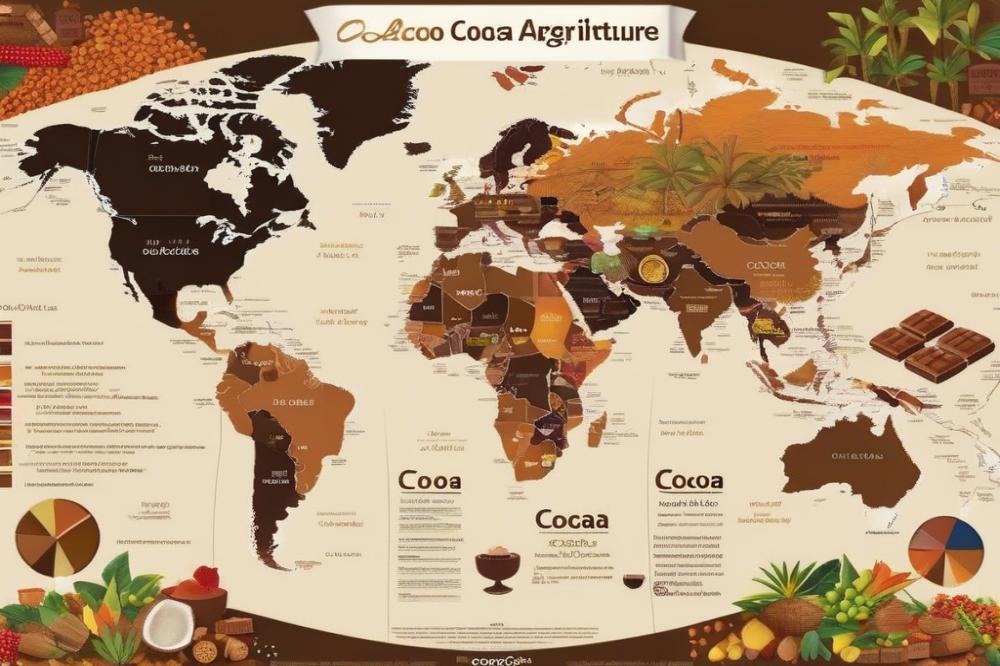
Cocoa sustainability means using farming methods that protect the environment, support farmers, and ensure a steady supply of cocoa. This approach is crucial, as it affects not just chocolate lovers, but also the health of our planet. When we think about it, cocoa farming can either contribute to problems like deforestation and pollution or be part of the solution. Thus, creating a balance is essential.
Overview of Sustainable Cocoa Farming Practices
Sustainable practices help farmers grow cocoa without harming the land. Techniques such as agroforestry allow cocoa trees to thrive alongside other plants, which adds to biodiversity. This method creates a richer ecosystem while improving soil health. Healthy soils yield better crops, benefiting both farmers and the environment.
Fair trade programs also play a role in maintaining ethical sourcing. They ensure that farmers receive fair prices for their cocoa, which can drive community development. When local communities thrive, they are more likely to invest in eco-friendly practices. Thus, improving the cocoa supply chain becomes a shared goal.
Role of Cocoa in Promoting environmental impact Reduction
Cocoa can significantly reduce environmental impact when grown sustainably. Shifting to climate resilience farming methods can protect against the challenges posed by climate change. For example, shade-grown cocoa protects trees and preserves habitats. Biodiversity increases, supporting wildlife and preventing erosion.
Moreover, promoting sustainable cocoa farming helps to raise awareness about the importance of ethical practices. This encourages consumers to choose products that contribute to environmentally-friendly agriculture. When consumers support responsibly sourced cocoa, they contribute to a larger movement that emphasizes the intersection of agriculture and environmental protection.
Adopting these sustainable practices is an important step. It creates not just economic benefits but also a future that respects both nature and communities. Understanding how cocoa impacts the environment encourages everyone to be more supportive of these initiatives. By valuing cocoa sustainability, we take part in a mission that protects our world.
Cocoa Farming Practices
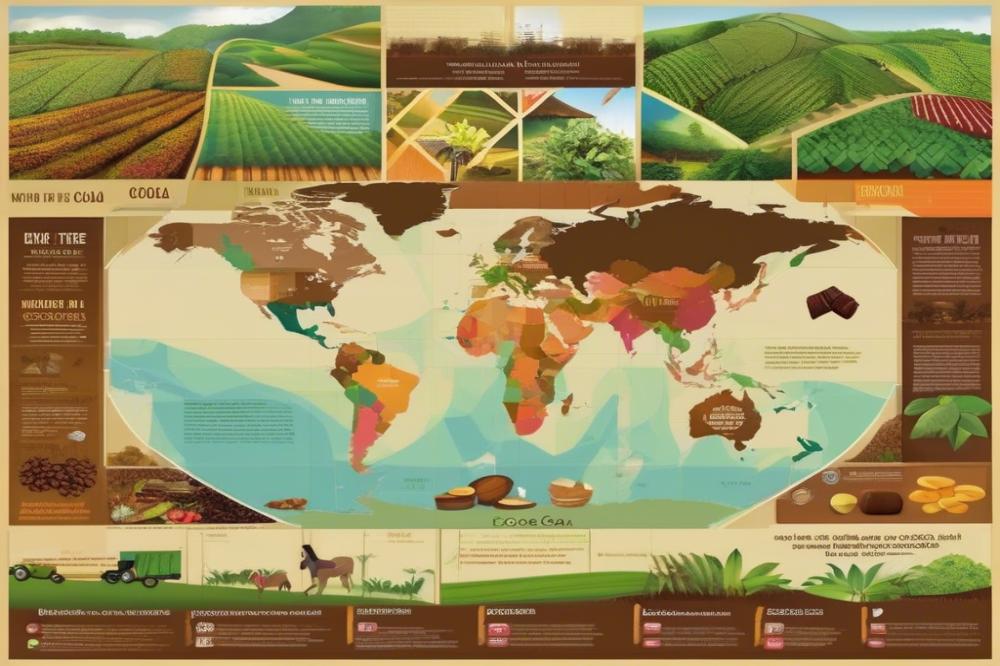
Agroforestry Systems in Cocoa Cultivation
Cocoa farming benefits greatly from agroforestry systems. This method combines trees and crops in the same area. Farmers grow cocoa alongside various other plants. Doing so creates a rich environment for growth. It mimics natural ecosystems, providing shade and protection for cocoa trees. This practice also promotes a healthier ecosystem. The mix of plants attracts a variety of wildlife. This can help control pests naturally, reducing the need for harmful chemicals. Additionally, agroforestry helps in managing the cocoa supply chain by providing farmers with alternative income sources from other crops.
Benefits of Agroforestry for Biodiversity and Climate Resilience
Agroforestry offers many advantages for biodiversity. It supports numerous species of plants, insects, and animals. These interactions create a balanced ecosystem. Healthy ecosystems help mitigate climate change impacts. Trees capture carbon dioxide from the air, which helps in climate resilience. A diverse ecosystem also protects against disease outbreaks. Naturally, this leads to more stable farming conditions. Ethical sourcing becomes more feasible with such sustainable practices. By using agroforestry, farmers contribute to community development as well. Stronger ecosystems can help communities thrive both economically and environmentally.
Soil Health Management Practices in Cocoa Farming
Maintaining soil health is crucial in cocoa farming. Healthy soil provides essential nutrients for cocoa trees to thrive. Employing methods like cover cropping can improve soil quality. Cover crops prevent erosion and add organic matter when they decompose. Farmers might also use compost to enrich their soil. This not only benefits cocoa but can also boost yields over time. Crop rotation is another strategy that helps maintain soil health. By rotating different crops, farmers can reduce nutrient depletion. They prevent soil degradation while encouraging biodiversity, which is essential for long-term sustainability.
Cocoa farming can play a vital role in reducing environmental impact. By adopting these practices, farmers can achieve better outcomes. Sustainable farming methods like these reflect a commitment to both quality and ethics. Embracing these changes supports the entire cocoa supply chain.
Ethical Sourcing and Fair Trade
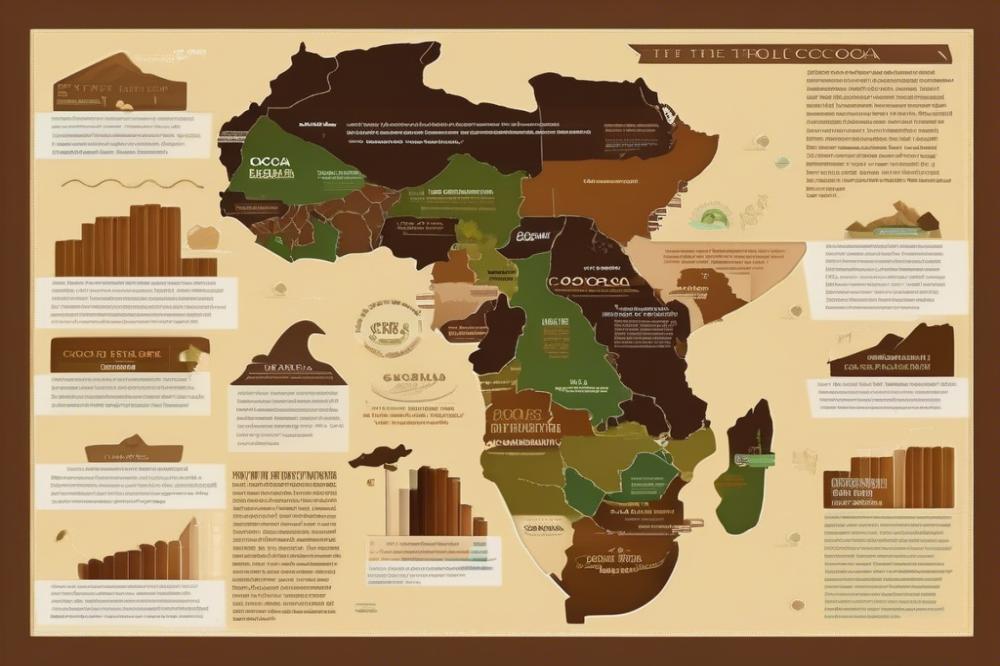
In the cocoa supply chain, ethical sourcing plays a critical role. Farmers deserve fair treatment and compensation for their hard work. When companies commit to sourcing cocoa ethically, they help create a more sustainable future. This practice promotes better working conditions and discourages child labor. Additionally, it supports farmers’ rights and environmental standards that are essential for cocoa farming.
Overview of Fair Trade Certifications and Practices
Fair trade certifications set guidelines for companies that want to support farmers. These certifications include strict standards around prices, working conditions, and environmental practices. Farmers receive a guaranteed minimum price, which protects them from market fluctuations. This assurance allows them to invest in their farms, improve soil health, and adopt agroforestry techniques. Various organizations help educate farmers about sustainable practices and support them in obtaining these certifications. They partner with local NGOs to promote biodiversity and climate resilience through sustainable cocoa production.
Impact of Fair Trade on Community Development and Farmer Livelihoods
Fair trade has a profound impact on community development. When cocoa farmers receive fair wages, they invest back into their communities. Improved education, health services, and infrastructure often follow this economic uplift. For example, schools can be built, and access to healthcare can be expanded. These enhancements help break the cycle of poverty that many cocoa farmers face.
Supporting fair trade is beneficial for farmer livelihoods as well. With more stable incomes, families can support themselves and plan for the future. This economic security encourages farmers to adopt practices that enhance environmental impact, such as organic farming and preserving local ecosystems. In this way, ethical sourcing not only uplifts individuals but strengthens entire communities.
Biodiversity and Cocoa
Cocoa farming plays a crucial role in supporting local biodiversity. When cocoa is grown in harmony with native plants and wildlife, it can create vibrant ecosystems. These farms become havens for various species, including birds, insects, and other wildlife. They contribute to ecological balance, which is essential for a healthy planet. By incorporating diverse plant life, farmers enhance the habitat for pollinators, which are critical for cocoa production.
Implementing strategies for enhancing biodiversity within cocoa farming systems can lead to significant benefits. Agroforestry is one approach that integrates trees into the cocoa cultivation process. This method not only provides shade for cocoa plants but also nurtures diverse species. It promotes healthier soils, prevents erosion, and improves soil health. Introducing companion planting techniques can also attract beneficial organisms and repel harmful pests. Organic farming practices further support a diverse ecosystem and minimize environmental impact.
Contributions of Diverse Ecosystems to Cocoa Sustainability
Managing diverse ecosystems is essential for the sustainability of the cocoa supply chain. Healthy ecosystems provide resilience against climate change. They help farmers adapt to unpredictable weather patterns, ensuring that cocoa production remains stable. Fair trade principles encourage ethical sourcing, which supports farmers committed to preserving biodiversity. Community development programs often link farmers to resources needed for sustainable practices.
A thriving biodiversity on cocoa farms enriches the overall environment. These ecosystems assist in maintaining water cycles and improving air quality. Moreover, they play a significant role in providing food and shelter to countless organisms. This interconnectedness reinforces the importance of preserving biodiversity within agricultural systems. It is vital for the future of cocoa and the planet.
Climate Resilience in Cocoa Production
Climate change poses a significant threat to cocoa farming. Rising temperatures, shifting rainfall patterns, and extreme weather events jeopardize cocoa yields. Farmers face challenges like diseases and pests that thrive in warmer climates. As a result, many of those who rely on this crop for their livelihood are left vulnerable.
Adaptation strategies become crucial in the fight against these impacts. One effective approach is agroforestry. By planting trees alongside cocoa crops, farmers can provide necessary shade and improve soil health. This method not only strengthens the cocoa plants but also creates a more sustainable ecosystem. Additionally, diversifying crop systems can help communities withstand climatic shifts. Growing other crops alongside cocoa allows farmers to spread risk and improve food security.
Sustainable practices play a vital role in climate resilience. Integrating techniques such as composting and organic farming can enhance soil health. Healthy soil retains moisture, which is essential during dry spells. Moreover, these methods promote biodiversity within the cocoa supply chain. Healthy ecosystems can better withstand threats posed by climate change.
Ethical sourcing and fair trade practices bolster efforts for sustainable cocoa farming. By paying fair prices, consumers support farmers in adapting to new challenges. Communities thrive when they can invest in their future sustainably. Promoting climate resilience is not just a local issue; it affects the global cocoa market, too. Ensuring that cocoa comes from resilient farms is essential for long-term success.
Preserving biodiversity is key to sustaining cocoa production. Diverse plant life can strengthen the ecosystem and provide natural pest control. When farmers protect their environment, they are also safeguarding their own livelihoods. This interconnectedness highlights the importance of community development and environmental stewardship in cocoa farming.
Challenges and Opportunities
The cocoa industry faces significant challenges in its quest for sustainability. Deforestation remains a major problem. This practice leads to habitat loss and affects biodiversity in cocoa farming regions. Furthermore, the environmental impact of conventional farming techniques often contributes to soil degradation. Many farmers struggle to maintain soil health without the use of harmful chemicals. As a result, ecosystems suffer, affecting local communities that depend on these resources.
Another pressing issue is the cocoa supply chain. Farmers frequently receive low prices for their crops, which makes it difficult to invest in sustainable practices. They want fair trade models that pay them fairly and ensure their livelihoods. Attention to economic stability is crucial in driving sustainable agricultural practices. Cultural differences may also influence how farmers view sustainability, complicating efforts to implement uniform practices.
Potential Innovations and Technologies
Innovations offer a pathway to address these challenges. Agroforestry techniques show promise for improving crop resilience. By integrating cocoa trees with other plants, farmers can enhance biodiversity and soil health. These systems can also provide additional sources of income. Techniques like intercropping can create healthier ecosystems that better withstand climate variations.
Additionally, new technologies can assist farmers in adopting sustainable practices. Mobile apps and platforms can provide crucial information on weather patterns and pest control. Such resources empower farmers to make informed decisions. Further, precision agriculture can enhance cocoa production by optimizing resource management. These innovations can lead to more efficient use of water, fertilizers, and land.
Role of Governments and Organizations
Governments and organizations play pivotal roles in promoting cocoa sustainability. Policies designed to support ethical sourcing and fair trade practices can transform local economies. Investment in community development programs can elevate farmers’ standard of living. Training and education initiatives enable farmers to learn about sustainable practices and their benefits. Collaborative efforts between various stakeholders can facilitate these changes.
Non-governmental organizations (NGOs) are crucial in providing support and resources. They often assist farmers in accessing markets that value sustainability. By connecting farmers with these opportunities, NGOs contribute to a more stable cocoa supply chain. Initiatives that promote agroecological approaches can greatly enhance climate resilience. Therefore, their involvement is key to fostering long-term sustainability in cocoa production.
Final Thoughts on Cocoa’s Role in Sustainable Agriculture
Cocoa plays a vital role in promoting sustainable agriculture. It provides livelihoods for millions of farmers around the world. As we explored, embracing eco-friendly practices in cocoa farming not only benefits the environment but also improves the quality of life for producers. This unique crop has the potential to lead to lasting positive changes in communities.
The need for continued efforts in promoting sustainability cannot be overstated. Cocoa production has a significant environmental impact, affecting everything from local ecosystems to global climate change. Simple changes can lead to great improvements. Farmers can adopt techniques like agroforestry that enhance crop diversity and soil health. These methods give us a pathway to minimize harm and promote a more balanced ecosystem.
Everyone has a role to play in this journey. Consumers can support products that emphasize sustainable practices, choosing brands that prioritize ethical sourcing. This small action can drive market demand for responsibly produced cocoa. Policymakers must craft regulations that encourage sustainable agriculture while offering support to farmers. Collaboration is key to creating a robust framework that promotes responsible farming practices.
In summary, we must unite in our efforts to protect the future of cocoa and the communities it supports. We all share the responsibility to advocate for sustainable practices. Your choices matter. Together, we can create a healthier planet and a prosperous future for cocoa farmers everywhere.

